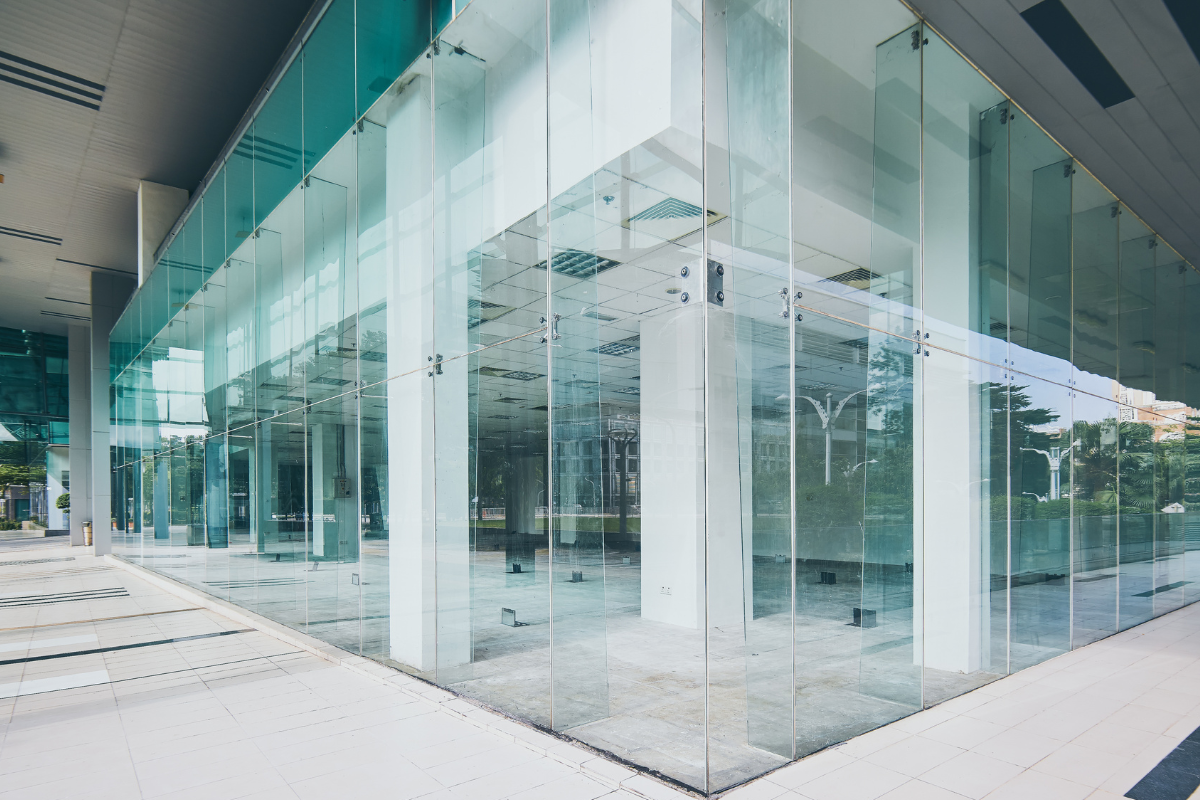
Selecting the right glass for your commercial project is crucial to ensuring both aesthetic appeal and functional performance. With a wide variety of glass types and applications available, the decision-making process can be overwhelming. This comprehensive guide will help you navigate the complexities of glass selection, considering factors such as performance, safety, energy efficiency, and design requirements.
Understand the Different Types of Glass
Before making a decision, it’s essential to familiarize yourself with the various types of glass available for commercial projects. Here are some common types:
- Annealed Glass: This is the most basic type of glass, which is typically used for interior applications. It is not tempered, so it can break easily and shatter into sharp pieces.
- Tempered Glass: This type of glass is heat-treated to increase strength and safety. If broken, tempered glass shatters into small, blunt pieces, reducing the risk of injury. It is ideal for high-traffic areas, windows, and glass doors.
- Laminated Glass: Composed of two or more layers of glass bonded with an interlayer, laminated glass offers excellent sound insulation and security. It’s commonly used in skylights, storefronts, and safety applications.
- Low-E Glass: Low emissivity (Low-E) glass is coated with a thin metallic layer that reflects infrared light while allowing visible light to pass through. This helps to maintain indoor temperatures and improve energy efficiency.
- Insulated Glass Units (IGUs): These consist of two or more glass panes separated by a space filled with air or gas. IGUs are designed to enhance thermal performance and reduce energy costs.
- Smart Glass: This innovative glass can change its properties (such as tint) in response to external stimuli like light or temperature. It provides dynamic control over light and privacy.
Assess Your Project's Requirements
When choosing glass for your commercial project, consider the following factors:
Aesthetic Appeal
- Determine the visual impact you want to achieve. The color, texture, and transparency of the glass can significantly influence the overall design of the building. Consider using patterned or tinted glass for unique aesthetics.
Performance Requirements
- Evaluate the performance needs based on the location and purpose of the building. For example, areas with high foot traffic may require tempered or laminated glass for safety, while buildings in hot climates may benefit from Low-E glass for better energy efficiency.
Safety and Security
- Assess safety standards and local building codes. If security is a concern, consider using laminated or tempered glass. For areas prone to break-ins, bulletproof glass may also be an option.
Energy Efficiency
- Examine the energy efficiency requirements of your project. Low-E and insulated glass options can significantly reduce heating and cooling costs, contributing to a more sustainable building.
Acoustic Insulation
- If the project is in a noisy area, consider using laminated or insulated glass to provide acoustic insulation, creating a more comfortable indoor environment.
Consider Environmental Impact
In today’s eco-conscious world, choosing glass with minimal environmental impact is essential. Look for manufacturers that adhere to sustainable practices and produce energy-efficient products. Opting for recyclable glass can also contribute to reducing waste in landfills. Certifications such as LEED (Leadership in Energy and Environmental Design) can guide you in selecting environmentally friendly glass solutions.
Budget Considerations
Glass selection can significantly impact your project budget. While high-performance glass options may come with a higher upfront cost, they often provide long-term savings through reduced energy consumption and maintenance. Consider the life cycle cost of the glass, including installation, maintenance, and replacement, when making your decision.
Collaborate with Experts
Engaging with experienced architects, designers, and glass manufacturers can provide valuable insights into the best glass options for your specific project. They can help you understand the technical specifications, installation processes, and long-term performance of different glass types. Collaborating with experts can also ensure compliance with local building codes and regulations.
Conclusion
Choosing the right glass for your commercial project is a critical decision that affects the overall aesthetics, safety, and energy efficiency of the building. By understanding the different types of glass, assessing your project’s requirements, considering environmental impacts, and collaborating with experts, you can make an informed choice that meets both functional and design needs. Taking the time to evaluate these factors will ensure the success of your project and contribute to a durable, visually appealing, and sustainable commercial space.
